Monday Dec 08, 2025
Monday Dec 08, 2025
Wednesday, 31 August 2022 00:25 - - {{hitsCtrl.values.hits}}
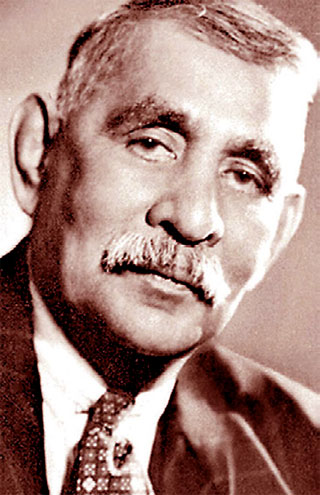
D.S. Senanayake
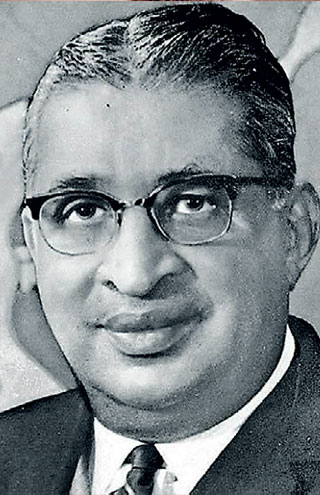
Dudley Senanayake
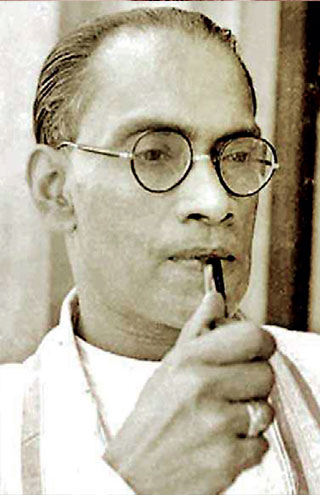
S.W.R.D. Bandaranaike
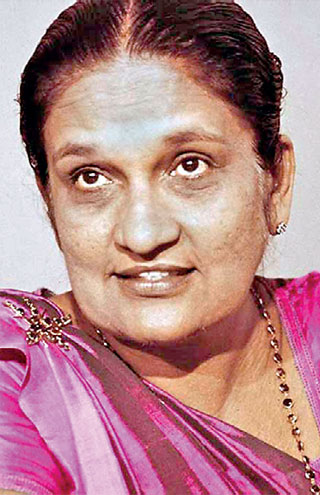
Sirima Bandaranaike
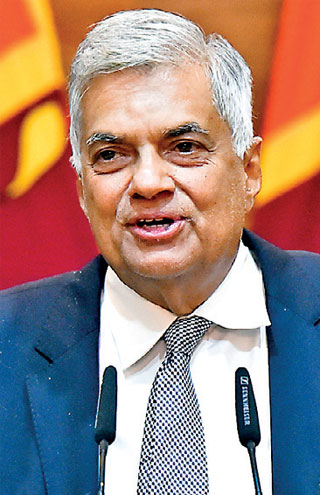
President Ranil Wickremesinghe
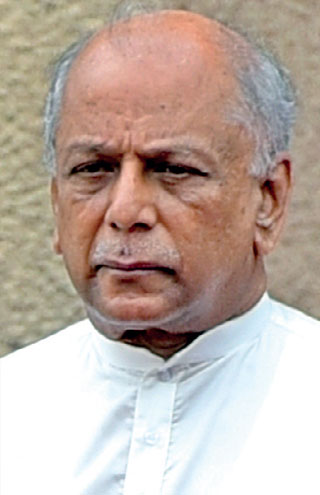
Prime Minister Dinesh Gunawardena
|
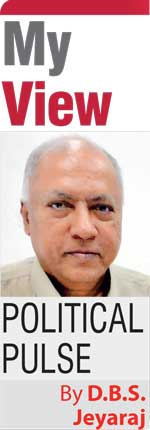 Reaching a viable agreement with the International Monetary Fund (IMF) and forming an inclusive cabinet are currently the twin urgent priorities of the Government headed by President Ranil Wickremesinghe and Prime Minister Dinesh Gunawardena.
Reaching a viable agreement with the International Monetary Fund (IMF) and forming an inclusive cabinet are currently the twin urgent priorities of the Government headed by President Ranil Wickremesinghe and Prime Minister Dinesh Gunawardena.
On the economic front both President Wickremesinghe and Central Bank Governor Dr. Nandalal Weerasinghe are optimistic about reaching a staff level agreement with the IMF soon. This will be followed by debt re-structuring talks with creditors especially China. Some observers have opined that the process could take at least three o six months before a satisfactory arrangement is arrived at.
On the political front, President Wickremesinghe has been diligently striving to form a multi-party Government comprising all political parties represented in Parliament. Forming such an inclusive Government is very likely to strengthen the Sri Lankan side in negotiations with the IMF as well as creditor entities and nations. Despite protracted discussions this goal seems rather elusive at present. This is chiefly because the chief opposition party the Samagi Jana Balawegaya (SJB) as a party is unwilling to join what is formally referred to as an all-party Government.
However there are media reports about the likelihood of some SJB parliamentarians joining the Government in an individual capacity. There is speculation that some more MPs from the Sri Lanka Freedom Party (SLFP) also may cross over to the Government. If these defections do materialise then President Wickremesinghe in tandem with premier Gunawardena will cobble together a fresh Government consisting of such defectors and other representatives of small parties. In that case the prospective Government cannot be labelled as an all-party government. The re-constituted new government is very likely to be called a national government if and when it materialises.
The concept of a national government is nothing new in Sri Lanka. In fact it was the United National Party (UNP) of which President Wickremesinghe is leader now, that introduced and led the first national government under very different circumstances several decades ago. Also a constituent member of that national Government then was the Mahajana Eksath Peramuna (MEP). The present premier Dinesh Gunawardena leads the MEP now.
Seven-party coalition government
The term National Government first came into usage in Ceylon – as Sri Lanka was called earlier – in 1965 when the then UNP leader Dudley Senanayake formed a seven-party coalition government. It was called a national government then. The seven members of the 1965 National Government were the United National Party (UNP), Ilankai Tamil Arasu Katchi (ITAK), Sri Lanka Freedom Socialist Party (SLFSP), All Ceylon Tamil Congress (ACTC), Mahajana Eksath Peramuna (MEP), Jathika Vimukthi Peramuna (JVP) and the Ceylon Workers Congress (CWC). The JVP in that Government is different to the JVP of now. The Jathika Vimukthi Peramuna was founded by K.M.P. Rajaratnae while the founder of the Janatha Vimukthi Peramuna was Rohana Wijeweera.
The Government headed by Dudley Senanayake in 1965 was not the first coalition government in the country. Even his predecessor Sirima Bandaranaike had been heading a coalition government with the Lanka Sama Samaja Party (LSSP). That Government suffered defeat in Parliament when a no confidence motion against it was passed in December 1964. Prior to that, S.W.R.D. Bandaranaike had formed a coalition Government in 1956 comprising three parties and some independents.
Though a coalition government in essence, Dudley named it a national government in 1965. There were some who argued then that Dudley Senanayake’s government could not be described as a national government because all the major political parties represented in Parliament were not in it. The chief opposition Sri Lanka Freedom Party (SLFP) and its leftist allies the Lanka Sama Samaja Party (LSSP) and Communist Party (CP) were not members of that national Government.
|
Tamil in Cabinet after 10 years
There was however a very good reason for Dudley Senanayake to call his Government a national Government. This was because there was once again a member of the Sri Lankan Tamil nationality in the cabinet after a lengthy absence of nearly 10 years. Former solicitor-general and eminent Lawyer Murugeysen Tiruchelvam represented the Ilankai Tamil Arasu Katchi (ITAK) – called the Federal party in English – in Dudley’s cabinet as Minister of Local Government. The cabinets of those days were small in numbers unlike the present. Dudley Senanayake’s cabinet when formed in 1965 had only 17 ministers. In later years the number increased to 20.
Independent Ceylon’s first cabinet headed by D.S. Senanayake was truly a national government though it was not described as such. Among the ministers were two Tamils, C. Suntharalingam and C. Sittambalam. Later Suntharalingam resigned but the All-Ceylon Tamil Congress (ACTC) leader G.G. Ponnambalam joined the government. When D.S. Senanayake’s son Dudley was elected as Premier in 1952, he appointed V. Nalliah and G.G. Ponnambalam as ministers. When Nalliah resigned after a month, Sir Ponnambalam Ramanathan’s son in law, Subbiah Natesan replaced him. Natesan the principal of Parameshwara College in Jaffna was an Indian Tamil.
Sir John Kotelawala became Prime Minister in 1953 after Dudley Senanayake resigned on grounds of ill-health. G.G. Ponnambalam was not included in the government of Sir John but Natesan was retained as minister. Also prominent civil servant Sir Kandiah Vaithiyanathan was inducted into the cabinet. Thus Tamils had continuously been cabinet ministers in the UNP governments of D.S. Senanayake, Dudley Senanayake and Sir John Kotelawala. There were always ministers of the Islamic faith such as T.B. Jayah a Malay and a Muslim Dr. M.C.M. Kaleel in the successive UNP governments from 1947 to 56.
‘Sinhala only’ polarised nation
This practice of including members of the minority communities in the government underwent a change when S.W.R.D. Bandaranaike became Prime Minister in 1956. The ‘Sinhala only’ slogan of SWRD had polarised the nation. When S.W.R.D. Bandaranaike formed his cabinet there was a Muslim minister C.A.S. Marikar but no Tamil in the cabinet. There was also a Muslim speaker H.S. Ismail.
The Bandaranaike government and the caretaker government under Prime Minister W. Dahanayake that followed, had several Muslim ministers like C.A.S. Marikkar, M.M. Mustapha, M.S. Kariapper and Sir Razeek Fareed but no Tamil ministers. The short lived Government of Dudley Senanayake in March 1960 had a Muslim minister in Dr. M.C.M. Kaleel but there were no Tamils cabinet ministers. His successor Sirima Bandaranaike had Dr. Badiuddhin Mahmud as a cabinet minister. There were no Tamil ministers in her government also.
Tamils making re-entry into govt.
Thus when Murugesysen Tiruchelvam became a minister in Dudley Senanayake’s cabinet in 1965, the Sri Lankan Tamils were making a re-entry into Government after an absence of almost 10 years. Politically Tiruchelvam’s inclusion in cabinet as a representative of the ITAK/FP was symbolic of ethnic reconciliation. The Sinhala-Tamil ethnic divide was bridged by the political rapprochement between the two major parties representing the most number of pre-dominantly Sinhala and Tamil constituencies respectively. In fact the ITAK/FP played a constructive “King maker” role in the Government that was formed. It was arguably more of a national unity government than a national government.
Dudley Senanayake’s no. 2 and the then State Minister J.R. Jayewardene summed up the prevailing mood of the time in a speech made to the Federal Party youth front in Kankesanthurai. JR who was chief guest said: “Since the formation of the national government an unfortunate chapter in the relationship between the Sinhalese and the Tamils has ended… The Federal party is the saviour of democracy because they not only supported us but also stood shoulder to shoulder with us in forming the national govt.”
As stated earlier there are great expectations of a prospective national government being formed under President Ranil Wickremesinghe soon. In that context delving into the circumstances leading to the formation of a national government 57 years ago under Dudley Senanayake would be of great interest and relevance in the current context. More so, because Ranil’s father Esmond Wickremesinghe who played a crucial behind the scenes role in unmaking the government of Mrs. Bandaranaike in 1964, played an equally important role in making the national government of Dudley Senanayake in 1965. It is against this backdrop that I intend re-visiting the formation of a UNP-led national Government in 1965 in this two-part article relying to some extent on my earlier writings.
Elections to Parliament were held on 22 March 1965. Parliament comprised 151 elected and 6 appointed MPs. There were 145 electorates but five of them were multi-member constituencies. The multi-member electorates were Colombo central electing three MPs and Colombo South, Batticaloa, Moothoor and Akurana electing two MPs each respectively. The six appointed MPs would be nominated by the new Prime Minister.
March 1965 election results
When the March 1965 election results were announced no single party had obtained a simple majority on its own. The UNP polling 1,590,929 (39.31%) of the votes had obtained 66 seats. The SLFP polling 1,221,437 (30.18%) of the votes came next with 41 seats. The ITAK (Federal Party) was third with 14 seats. It had polled 217,914 (5.38%) votes. The LSSP polled 302,095 (7.4 %) votes and got 10 seats. The CP got 109,754 (2.71%) votes with 4 seats.
Among the other parties winning seats were the Sri Lanka Freedom Socialist Party (SLFSP) which polled 130,429 votes getting 5 seats. The SLFSP was a union of SLFP breakaway MPs led by C.P. de Silva and the Lanka Prajathanthrawadi Pakshaya (LPP) of W. Dahanayake. The All Ceylon Tamil Congress led by G.G. Ponnambalam got 98, 746 (2.44%) votes and 3 seats. The Mahajana Eksath Peramuna (MEP) led by Philip Gunawardena and the Jathika Vimukthi Peramuna (JVP) led by KMP Rajaratne formed a common front and contested together. They got only 2 seats. Philip was the sole winner from the MEP. The JVP leader KMP Rajaratne lost in Welimada but his wife Kusuma Rajaratne was returned from Uva-paranagama.
Apart from these MPs from accredited political parties, six candidates contesting as independents were also elected in 1965. They six independent MPs were M.A. Abdul Majeed (Pottuvil), Prins Gunasekera (Habaraduwa), M.S. Kariapper (Kalmunai), Percy Samaraweera (Welimada), R.G. Senanayake (Dambadeniya) and Mudiyanse Tennekoon (Nikaweratiya). An interesting feature of the poll was that of elections not being held to the double member constituency of Colombo South. J.R. Jayewardene of the UNP and Bernard Soysa of the LSSP were the only candidates to have filed nomination papers there in 1965. Both were elected unopposed as Colombo south MPs.
When the political breakdown on the basis of party positions was taken it appeared that the UNP with 66 seats was also sure of the support of the SLFSP Bloc of 5 MPs. The MEP-JVP combine could support it if the UNP was able to procure a majority. Three of the six Independents – Abdul Majeed, Kariapper and Samaraweera were also prepared to support the UNP. This would give the UNP a possible total of 76 out of 151 elected MPs. If Dudley Senanayake became the Prime minister and nominated six appointed MP’s then the UNP government tally could go up to 82 out of 157. Even with a UNP parliamentarian becoming speaker Dudley Senanayake would have a flimsy majority of six. Besides the Tamil Congress with 3 MPs was also ready to support the UNP Government if necessary.
On the other hand the SLFP with 41 seats was sure of LSSP (10) and CP (4) support. This gave the SLFP-LSSP-CP combine a total of 55 seats. The support of Independents R.G. Senanayake, Prins Gunasekara and “Podi putha” Mudiyanse Tennekoon increased it to 58. This was not enough to form a majority but if the FP supported the SLFP or at least refused to support the UNP then there was a chance of forming a Government. The MEP-JVP and even a few more Independents could be possibly weaned away. With six appointed MPs a razor thin majority was feasible.
Governor-General William Gopallawa
Besides the SLFP thought it had a hidden yet powerful asset. This was in the form of the Governor-General William Gopallawa. He had been appointed Governor-General in 1962 by Sirima Bandaranaike when she was Prime Minister. Gopallawa who was connected to the Dullewa clan of Matale was also related to Bandaranaike. William Gopallawa’s daughter Iranganie was married to Sirima Bandaranaike’s younger brother and private secretary Dr. Mackie Ratwatte. These ties made the SLFP-LSSP-CP hierarchies feel that the Governor-General could be manipulated if necessary.
William Gopallawa had replaced Sir Oliver Goonetilleke as Governor-General in 1962 after the abortive coup attempt by senior Army, Navy, Police officials. William Gopallawa who later became Sri Lanka’s first (non-executive) President was a lawyer. He had served as municipal commissioner of Kandy and Colombo and had also been Ambassador to China and the USA. Since Gopallawa was related to the Ratwatte family and had been appointed Governor-General by Ms. Bandaranaike, the UNP doubted his impartiality. Likewise sections of the SLFP and LSSP thought he could be made to toe their line. William Gopallawa however proved both sides wrong by his unimpeachable conduct in the matter.
The Trotskyite LSSP took the lead in the Prime Minister issue by insisting that Mrs. Bandaranaike should not resign as PM despite the adverse election results. Instead the LSSP wanted Mrs. Bandaranaike to acquire a Parliamentary majority with the aid of political parties such as the FP and independents. The LSSP was supported in this by many senior SLFP stalwarts. The LSSP led by Dr. N.M. Perera in those days was a powerful entity unlike the caricature it is today under NM’s nephew Prof. Tissa Vitarane. Due to these pressures Bandaranaike delayed submitting her resignation as Prime Minister by 40 hours.
In the meantime the LSSP and sections of the SLFP mobilised large crowds outside “Temple Trees” to demonstrate and demand that Mrs. Bandaranaike should not resign. Crowds were also assembled in Fort outside “Queens House” (Presidents House) to prevent her entering the premises to submit her resignation. Thousands of SLFP-LSSP supporters thronged the Galle Face Green along Galle Road. There were also unsuccessful attempts to gather outside Dudley Senanayake’s residence in Borella and forcibly confine the prime minister elect within “Woodlands”. The situation was highly volatile.
ITAK/FP held the balance of power
The prevailing Parliamentary arithmetic after the elections indicated that the Federal Party (ITAK) with its 14 seats held the balance of power. With FP support Dudley Senanayake could obtain a majority easily. The UNP (66) and FP (14) together would have 80 seats. With six more appointed MPs the new Government would have 86 out of 157 seats in the house. Even the support of other parties such as SLFSP, MEP, JVP and Tamil Congress would not be necessary.
Likewise if the FP opted to support the SLFP the hand of Mrs. Bandaranaike would be strengthened effectively. The 14 seats of the FP plus the 55 seats of the SLFP-LSSP-CP combine would amount to 69. Three of the six independents were anti-UNP. Two other independents could be persuaded to support the new SLFP Government. If Mrs. Bandaranaike was sworn in again as Prime Minister and nominated the six appointed MPs the new SLFP led Government would have 80 out of 157 seats.
The importance of the FP was driven home to Dudley Senanayake when he had called on the Governor-General on 23 March after the election results were known. Gopallawa had then informed Senanayake that the incumbent PM Ms. Sirima Bandaranaike was yet to submit her resignation. The Governor-General also told Dudley Senanayake that though the UNP was the single largest party with the most number of seats it was required to acquire a stable majority. He suggested that the UNP obtain the support of other parties such as the FP and prove that it possessed a stable majority.
|
Kingmaker or Queenmaker
Against this backdrop it was crystal clear that the Ilankai Tamil Arasu Katchi (ITAK) with its 14 seats could either be a Kingmaker by supporting Dudley Senanayake or a Queenmaker by endorsing Sirima Bandaranaike. What happened thereafter is well-known. The ITAK/FP threw in its lot with the UNP and enabled Dudley Senanayake to become Premier. The party joined the UNP-led national Government. The reasons as to why the ITAK decided to support the UNP and how this state of affairs came about will be narrated in detail in the second part of this article next week.
(The writer can be reached at [email protected].)